Officially, the first railway line was between Havana and Güines in the present Republic of Cuba, then still a province of Spain. That line was inaugurated in 1837. A few years later, a rail link was built between Barcelona and Mataró. We look at some of the most beautiful train stations in Spain.
The Barcelona railway is still there and therefore the oldest in present-day Spain. From then on, the expansion of the rail network went quickly. Naturally, stations of all shapes and sizes popped up across the country. Many of them are still standing. Below is a brief summary of the nine most beautiful train stations in Spain.
Almeria
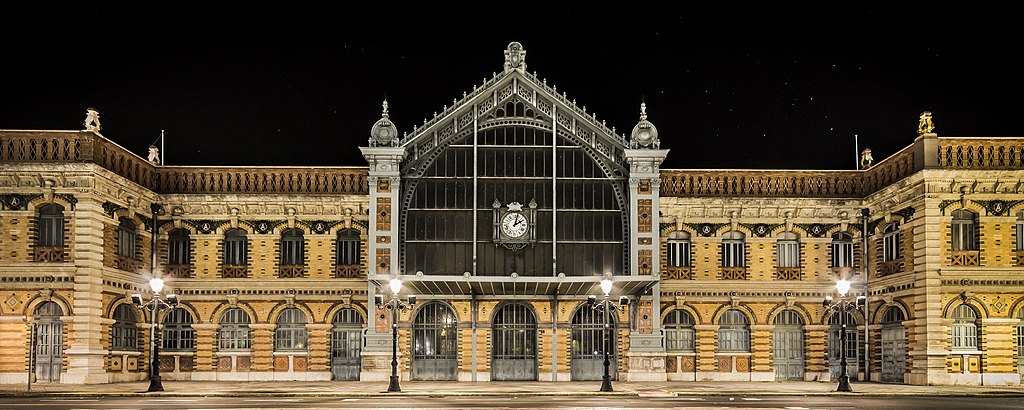
This train station, constructed in 1892, has been out of use since 2000; but it is still worth a visit. Originally, the station was intended to transport minerals from the Sierra Morena to the port of Almería. However, it was not long before other goods and passengers were also transported via this track. This connected Almería, pulling it out of isolation.
The building has an eclectic style – a combination of different architectural styles – with modernism in particular standing out. The most striking building elements are the entrance’s iron and glass, but the tiling is certainly worth a look as well. Special fact: under the station are two bunkers from the time of the Spanish Civil War. The application for the designation of the station as a national cultural heritage (Bien de Interés Cultural) is currently underway.
Aranjuez
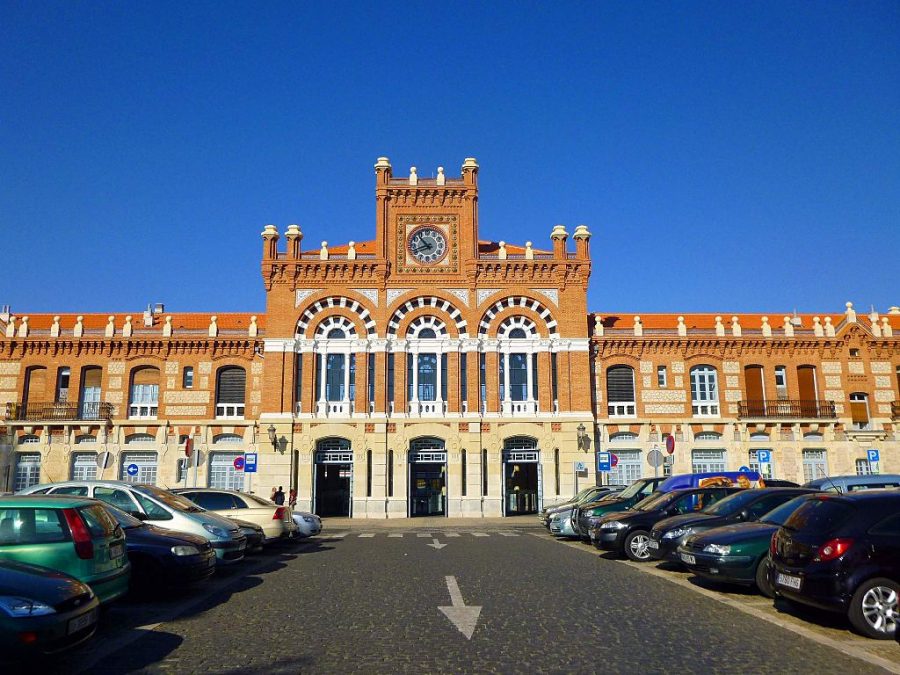
The station of Aranjuez, in the province of Madrid, is neo-Mudejar in style. The rail link between Aranjuez and Madrid dates back to 1851, making it one of the first train connections in Spain. It was first used to transport agricultural products from Aranjuez to Madrid. Among which were the well-known and coveted strawberries, giving this connection the name Tren de la Fresa (strawberry train). Today the connection is also for passenger trains. Of the neo-mudéjar style, the ornaments, mosaics, decorative tiles and awnings stand out. But the real beauty lies in the combination of all these elements.
Canfranc
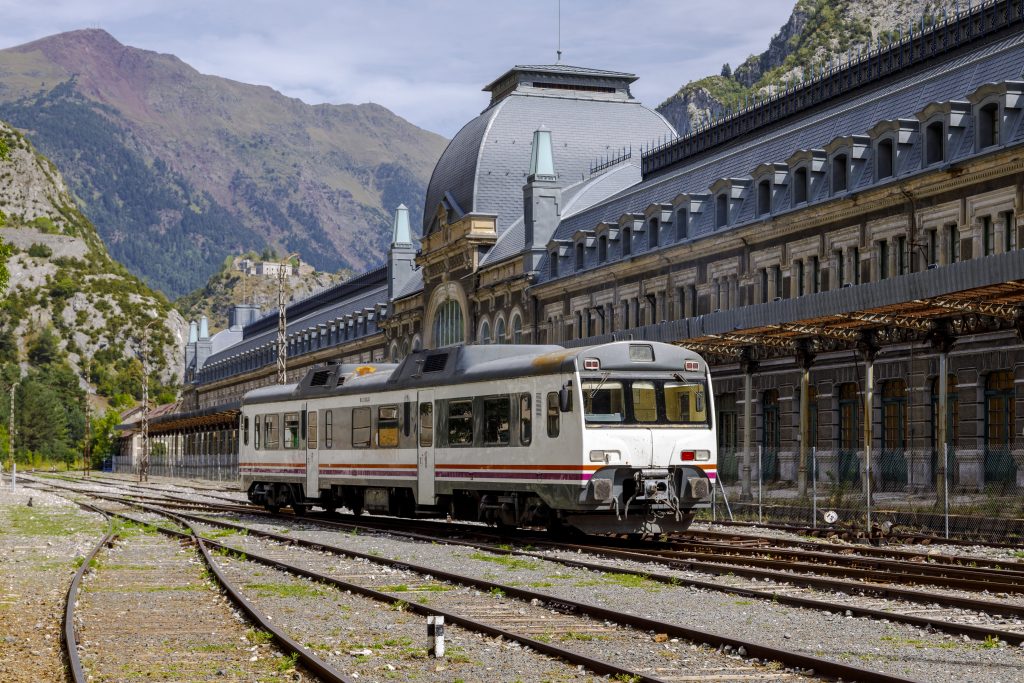
Canfranc train station is one of the most beautiful, and for sure the biggest, in the country. As the name suggests, it is located in Canfranc, in the province of Huesca, near the French border. It is therefore not surprising the station is located on a formerly important international rail connection between Spain and France. After the collapse of the bridge at L’Estanguet in 1970, the international connection discontinued. Today it is a terminus for the Spanish railway connection.
Inaugurate on July 18, 1928 and inspired by the architecture of the French palaces of the nineteenth century, the building has a striking shape. Since 2002, it has the status of national cultural heritage and so is an official monument. In the years Spain was the dictatorship of Franco, Canfranc was the route for war crimes such as the transports of stolen gold from the Jews by the Germans. At the end of WWII, many Nazis fled from Germany via Canfranc to Spain and via there to South America.
Bilbao
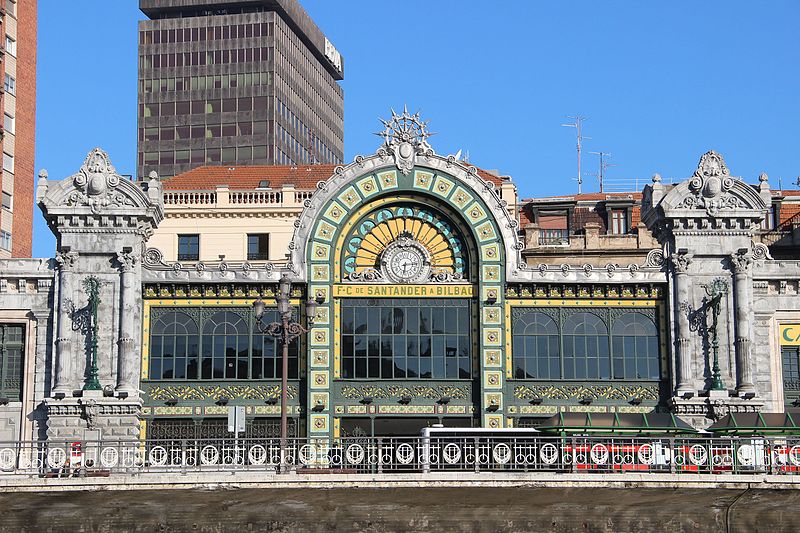
Officially the station is Bilbao-Concordia. However, the abbreviated version La Concordia and Santander station are as well-known. It is one of the oldest stations in Spain, built around 1902 in a modernist style. The most striking element is the rose window on the facade, which is reminiscent of the Belle Epoque.
Jerez de la Frontera
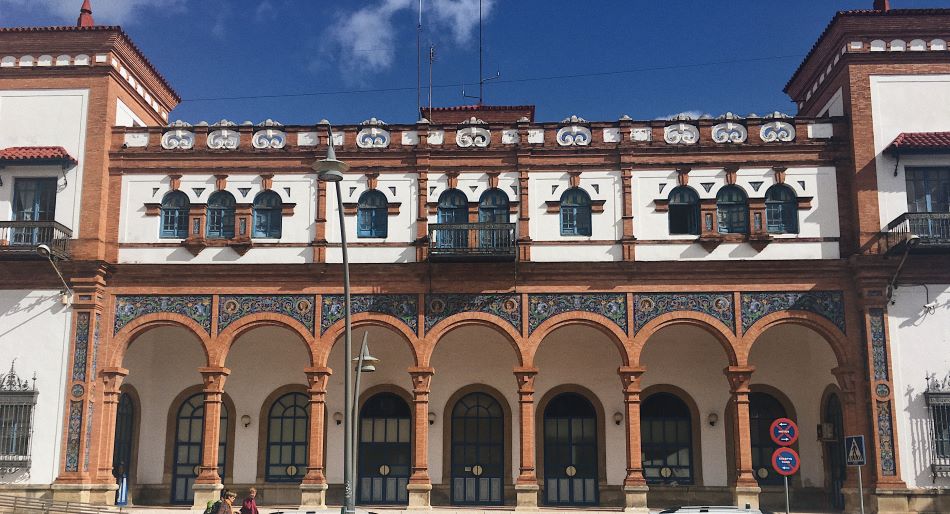
One of the most beautiful train stations in Spain is located in the province of Cádiz. It has a more than monumental character and is of great architectural value. Declared of national cultural heritage, it is the first train station in Andalucia, built in 1854. Initially, the famous sherry wine from Jerez was transported on this track to the port, to be shipped to the United Kingdom. The station is a mix of styles: Renaissance with elements of the regional and Mudejar style.
Puebla de Sanabria
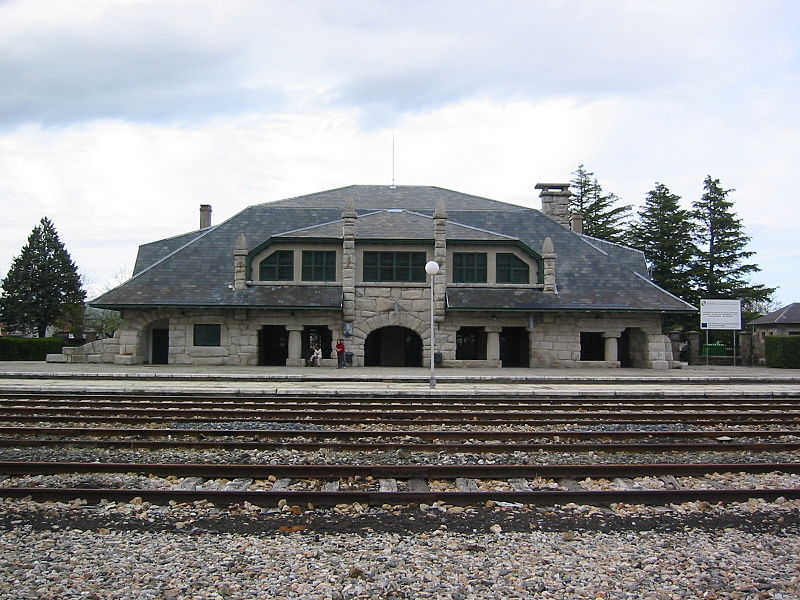
In Puebla de Sanabria, in the province of Zamora, there is a small train station that stands out for its inconspicuousness. It is similar in the style to many other buildings in that area. This gives it a warm and homely appearance. It consists of and large light stones that stand out against a slate roof.
Toledo
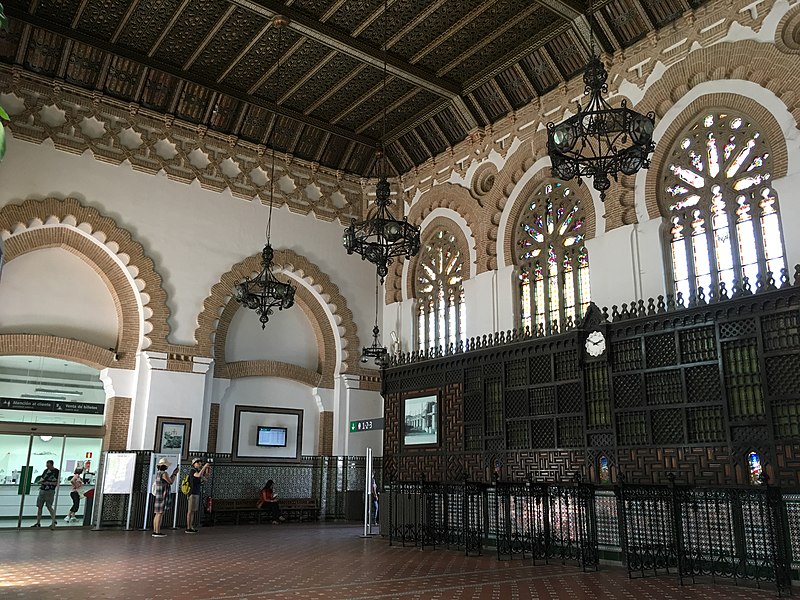
The station of Toledo also takes the visitor back in Spanish history. Inaugurated at the beginning of the twentieth century, restoration took place in 2005 to avoid the gradual loss of the characteristic neo-Mudejar style. This station, designed by the Spanish architect Narciso Clavería y Palacios, is a National Cultural Heritage.
Valencia
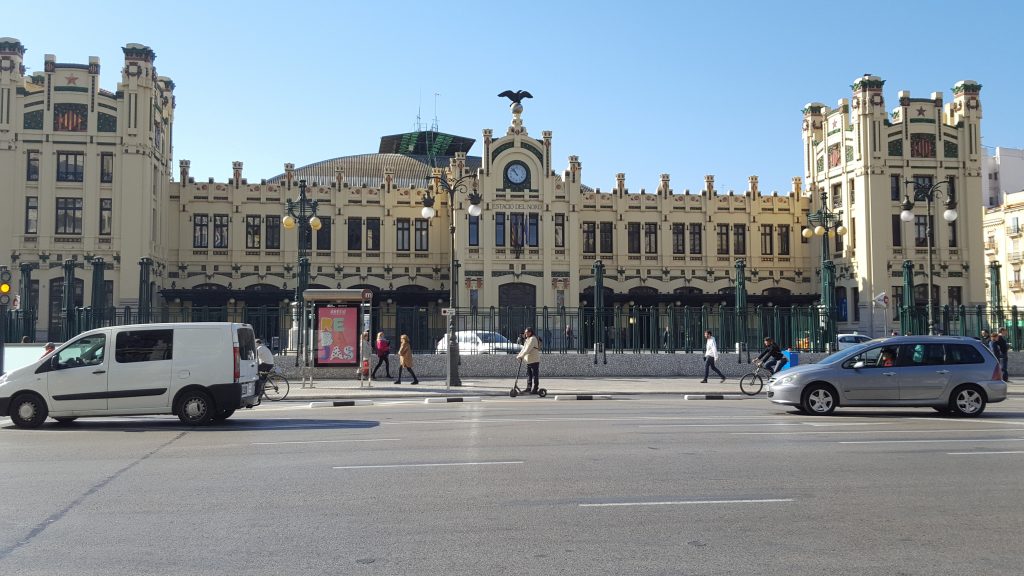
Built in a modernist style, the Estació del Nord in Valencia has a strong monumental character. The predecessor of the current RENFE constructed and put it into service in 1917. It is one of the most notable Spanish train stations due to its size and the extensive number of ornaments that decorate the building. In 1983, Spain declared the train station a national cultural heritage site.
Zamora
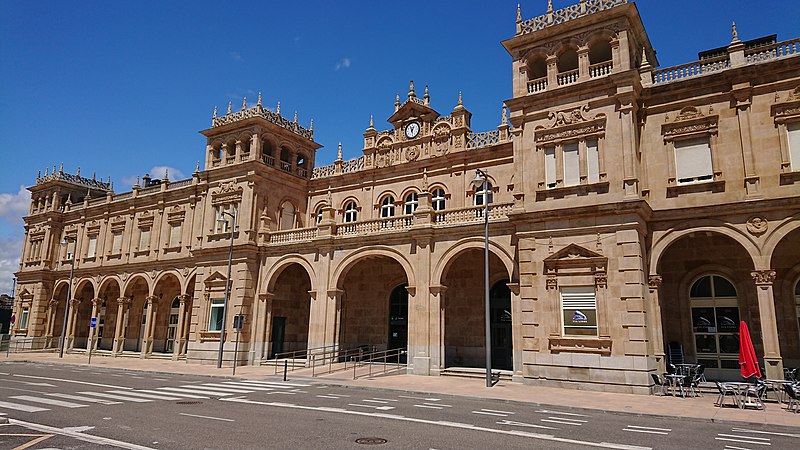
Zamora train station is without a doubt a station with character. This is one of the reasons why it can call itself of historical importance. After its construction started in 1927, it only went into use in 1958. The station building is built in Plateresque style, a 16th-century Spanish architectural style. The most striking element of this is the facade of more than 90 metres long, with four square towers connected by arches. Also special is that its structure is of stones from Villamayor (Salamanca).


